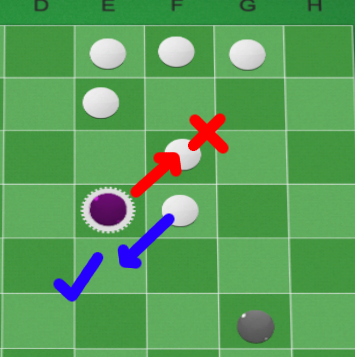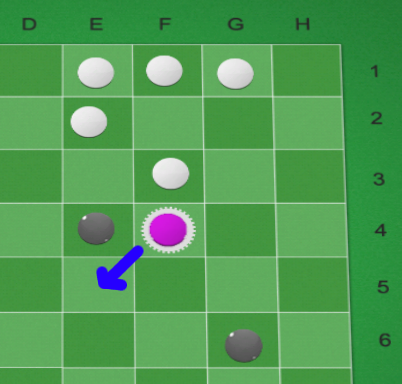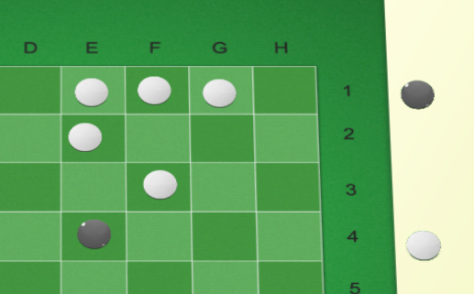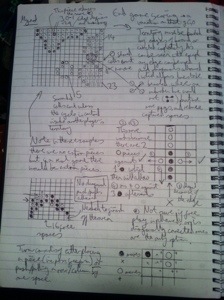Introduction
This is definitely one of those games where the name directed the mechanic. The concept of karma – good and bad, owing or being owed a debt, and both being a responsibility – and a meta game element of card destruction (making every deck unique) and Real World ™ consequences (in the form of a verbal contract to play) sort of came after the pun of Karma and Armageddon.
Strangely, the term has little prior use; mostly when I come up with a cool word I find “it’s been done already”. Great minds think alike, normally, and it’s hard to come up with something truly unique. Hence, I disclose the following existing references to karmageddon:
Hank Williams song, Karmageddon
The Urban Dictionary definition of Karmageddon:
Karmageddon: The Movie
I’ve been bouncing this particular idea around for a few weeks, with a vague notion it should involve Playing Cards; ideally ones that people don’t mind destroying a bit. Those horrible cheap “hobbit” cards you get in Christmas Crackers would be ideal, as ripping and writing on these is no real loss. However, no doubt at some point I’ll do an IndieGoGo/KickStarter for official decks, like Play Test: Legacies did (Sorry I missed THAT one!).
The most important part of this game concept is that players may “help” you, even when you don’t want it, and that this will exact a real consequence to clear the debt. Of course, like a gambling debt, this isn’t enforceable. However, entering into the spirit of the thing is the whole point. Why cheat? You’re only robbing yourself…
Set up
There are two elements to this game:
A card game played with (what starts out at least as) a standard deck of cards. If there are Jokers, bridge rules or instruction cards, include them.
Redemption of Debt where cards used to help other players are IOUs for an hour of a player’s time on any reasonable, legal and responsible task.
To play (the first time) a Sharpie or permanent marker and a standard deck of cards (with jokers) is necessary for 2-4 players. For more than 4 players an extra deck of cards is added for each additional player up to 8 maximum; ideally this should have a different back design or be different size to allow separation for future 2-4 player games. These cards will be torn, ripped and marked, so will likely not be useful for other games afterwards.
NOTE: a deck where cards are missing (otherwise useless!) is fine as a starting deck. Subsequent play will likely not have all the cards anyway, so one or two missing now won’t matter. Reuse/Recycling!!! I feel better already!
Set up for the Meta-Game (the redemption of favours) is merely the agreement of all players that they will commit to an hour of time helping one another for each “Debt Card” they end up with. Where this occurs in game, the card will be ripped in two and both parts signed by helper and helpee; its recommended that a phone number or email address for each is also written down, unless players are well acquainted. The helpee then uses their half in play (for that game only) and later as a reminder that they owe a favour. The helper keeps their half to call in the debt.
NOTE: The hour of time and the task are to be mutually agreed between helper and helpee. It could be anything crom mowing a lawn, babysitting, fixing a computer, whatever is acceptable and doable.
NOTE 2: Debts do NOT cancel out. If Mike owes Paco a debt and vice versa, they don’t call it quits. They both do an hour for the other. This is a matter of honour!
Once a debt is paid, “Done” is written on the helpers half and “Paid” is written on the helpees half. Cards can be kept as a memento, burned ceremoniously or binned.
Game play
The deck is shuffled (half cards are not to be kept from previous games). Players cut for who should go first, lowest first – Aces low – then the deck reshuffled. Play will simply consist of turning over cards until a task is achieved, when the player will keep those cards, or the task fails and the cards are returned to the bottom of the deck; there is no discard. Play then passes to the next player (in the order determined by the previous draw).
NOTE: over time decks may be added of a variety of different sizes. One option is to put them all in a box with a hand sized opening and have cards pulled out without looking, like drawing a raffle ticket.
Before turning over any cards each player states whether they are aiming for 1 to N cards to complete a task, where N is the greater of number of players or 4. Players may NOT choose a number for which they currently already have a successful trick displayed in front of them. Then cards are turned over up to a maximum of the determined number. If ALL of these cards are Ace-Ten (i.e. Not court cards, Jack, Queen, King) then the task is successfully completed, the set of cards is displayed in front of the player, and play passes to the next. If a court card is turned over before N normal cards, the task is “at risk”. If the court card was the first card, play continues as normal, except that the player is now attempting to get a full set of court cards to achieve the task. If a normal card (i.e. Ace-Ten) then appears before completion, again the task is “at risk”.
NOTE: if a Joker or other non-playable card is turned over, the current player should mark its face (not back) as either Normal or Court. This will be a permanent change. These cards can never be used or exchanged in “at risk” situations. If they come up again at the wrong time the task automatically fails.
At this stage, any other player can agree to substitute the offending card for one that would allow the task to be completed. Where only one offer of help is made, the player MUST accept. If more than one offers, the player can choose who helps them.
NOTE: this help can only come when another player already has cards laid in front of them from earlier successful tasks.
Once help is agreed, the “at risk” card is placed in front of the person offering help and one of their cards (normal or court, depending) is placed in front of the current player. Then the task continues. If successful – N normal or court cards are turned over – the swapped card is ripped, signed and half used with the rest of the cards for that task and displayed in front of the player. The other “at risk” card is added to the helper’s hand in any legal way (see later).
If the task is put “at risk” again by the wrong type of card showing up, another opportunity for help is available. if no offers of help are forthcoming, all the cards are returned to the bottom of the deck. This includes ones placed in front of helpers and helpees; they’ve lost a card to you for no gain by either party.
When a helper receives a card from the current player, if and only if the task is successful, they can add their new card to a current trick, or make a new single card trick. However, there should never be two tricks of the same size (court or normal). Tricks of greater than N in size are allowed, and will count as N for end game purposes, but can only be constructed through helping others; these can act as banks for future help, but do not count for more than N for victory point purposes.
NOTE: There can still only be one trick of N or greater size!
Play continues until a player has tricks of 1 to N (1,2,3,4, etc) of either normal or court cards; this is the Good Karma ending. Removing a card to help another player may not leave a player with two tricks of the same size. Alternatively, play ends when there is in front of any player tricks 1 to N of court cards; this is the Bad Karma ending.
Victory points are allocated on the basis of total index cards – total court cards in a player’s hand. If (IF!) a player has tricks 1 to N of court cards only these count as positives. N Wrongs DO make a Right! These are purely for fun, to encourage strategic play. The biggest victory is in being owed or owing no debt. If this is the case, a player’s victory points are doubled. Of course, the most important victory is honourably redeeming debts owed.
Enjoy!
Final NOTE: After a few times playing, the deck is likely to start getting a “bit thin” when that happens, add a single suit – Ace-King – from another incomplete or hated cheap deck. There should always be a minimum of 10 cards per player, with an approximate ratio of 10:3 normal to court cards.
Final FINAL NOTE: If you think this SHOUKD be KickStarted, comment here. I have ideas for expansions 🙂



















